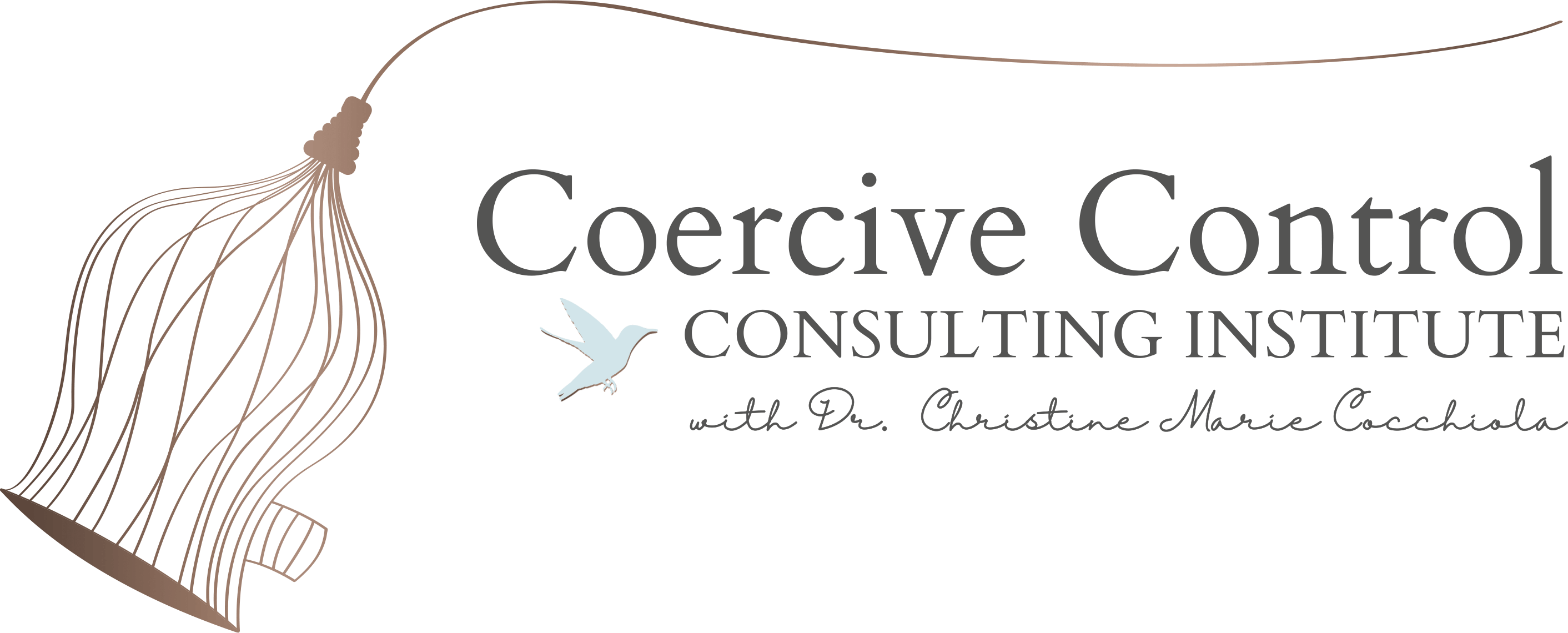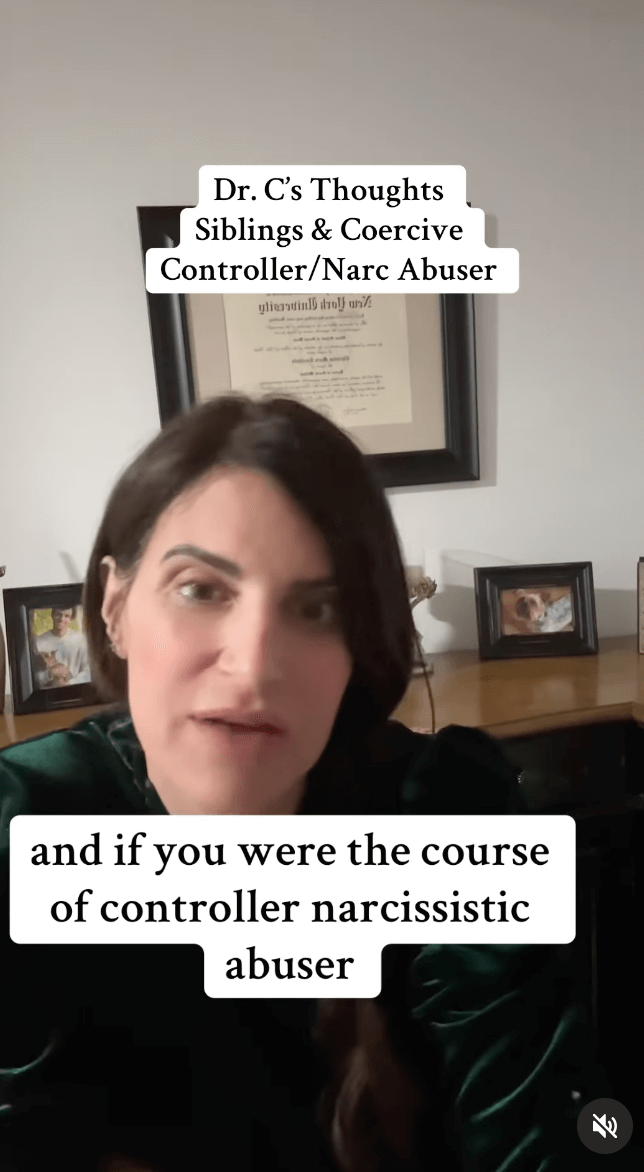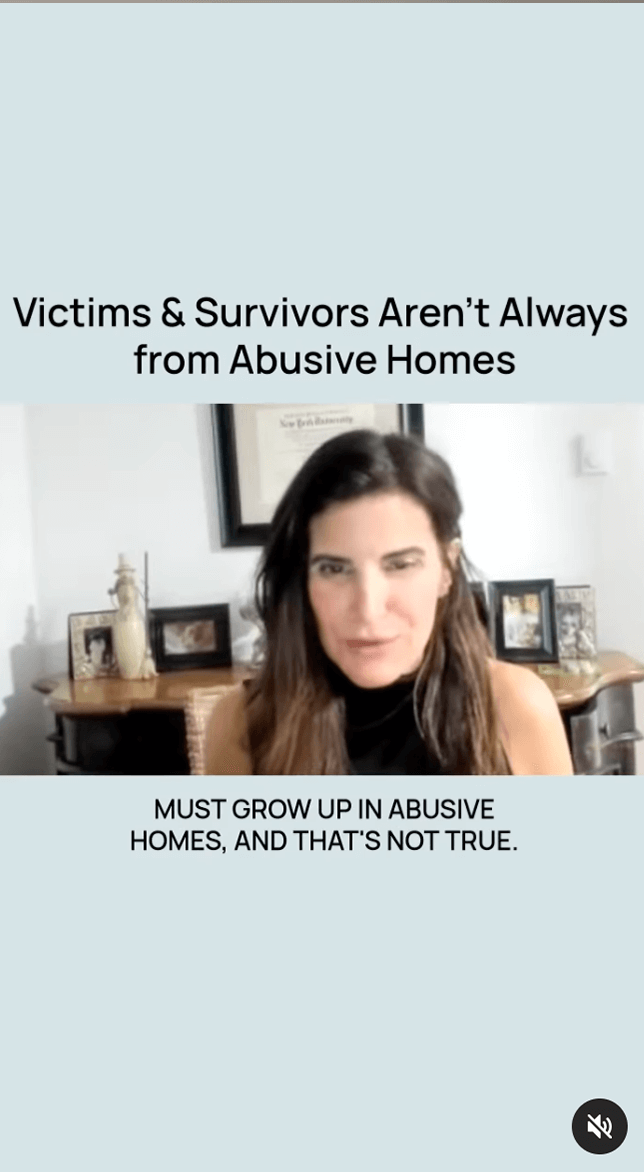Welcome, Protective Parents.
If you’re here, it means you’re seeking help to navigate the oppressive reality of coercive control. You may have lived through the torment of an abusive relationship and are now fighting to protect your child. You might also be grappling with institutional betrayal—feeling let down by the very systems designed to safeguard you and your family.
We understand how overwhelming this can be, and we’re here to help.
As Coercive Control and Trauma-Trained Clinicians, Coaches, Protective Parents, and Survivors—we offer the expertise, empathy, and shared experience to support you on this journey.
Together, let's maximize your time with your child and minimize their exposure to the coercive controller. And most importantly, let's fortify and/or reignite and strengthen your child’s attachment to you, even in the face of challenging circumstances.
These wounds can be healed. I'm here to support you every step of the way.

Protective Parenting Program
Our Signature Program for Parents
The Protective Parenting Program is offered both as a LIVE Coaching Training Course with Dr. C or as a Self-Study Training Course.
Have Questions? Schedule a Free Consult.

Dr. C's Community
For protective mothers to support engaging in therapeutic best practices for children being harmed by the coercive controller/narcissistic abuser.
Dr. C’s Community provides coercive control, trauma-informed coaching and a built-in support network, connecting you with other protective moms who are going through similar experiences. You’re not alone—together, we navigate the journey of healing and empowerment.

Other Courses & Resources
Webinar for Protective Parents & Allies
Whether you are a protective parent or have a loved one in that role, this webinar offers a profound understanding of the experiences faced by victims and survivors. By delving into the intricate dynamics of coercive control, attendees will gain valuable insights into the manipulative tactics employed and the resulting emotional toll.
Webinar for Adolescents & Protective Parents
Discover where your boundaries lie with our eye-opening webinar: ‘Where Is Your Line?’ This educational session is specially crafted for adolescents/young adults and their protective parents, offering crucial insights into recognizing coercive control and unhealthy dynamics within relationships.
Free Visual Tool
This resource illuminates the trauma experienced by children who are victims of a coercive controller. The chart provides valuable insights into their psychological struggles, helping protective parents understand the journey from pre-trauma vulnerability to the challenges faced while under coercive control. By mapping this journey, parents can recognize their crucial role in guiding their children toward freedom, reignited attachment, resilience, and post-traumatic growth.
Free Guide
Dr. Cocchiola's guide provides specific interview questions for parents seeking therapists or court professionals to help children affected by coercive control. While not exhaustive, it offers focused inquiries, enabling parents to find compassionate and qualified professionals for their children's healing journey.
Free Guide
These statements may prove useful if you are engaging with a clinician, school professional, physician, or other providers.
We need a SEA of ALLIES to counteract those who do not understand the coercive control of our children. The Clinicians in our directory have completed Dr. C’s Coercive Control Trauma-Informed Clinician Certification Training.
Recommended Reading
"Fair-Fighting Rules"
on Therapist Aid
"Using Love Language to Connect with Our Children"
on Parents.com
"Reunification Therapy for Children With a Domestic Abuser?"
on Psychology Today
Other Peer-Reviewed Articles
- Barnett, O. W. (2000). Why battered women do not leave, part 1: External inhibiting factors within society. *Trauma, Violence, & Abuse, 1*(4), 343-372.
- Boland, S., & Brassard, M. R. (2011). Psychological maltreatment of children and youth. In J. E. B. Myers (Ed.), *The APSAC Handbook on Child Maltreatment* (3rd ed., pp. 3-24). Thousand Oaks, CA: Sage Publishing.
- Brassard, M. R., & Donovan, K. L. (2006). Defining psychological maltreatment. In M. M. Feerick, J. F. Knutson, P. K. Trickett, & S. M. Flanzer (Eds.), *Child abuse and neglect: Definitions, classifications, and a framework for research* (pp. 3-27). Baltimore, MD: Paul H Brookes Publishing Co Inc.
- Buel, S. (n.d.). 50 obstacles to leaving.
- Cattagni Kleiner, A., & Romain-Glassey, N. (2018). How the current management of intimate partner violence can endanger victimized mothers and their children. *Violence Against Women, 24*(2), 200-223.
- Child Abuse Review. (2010). *Vol. 19: 5-20*. Published online 14 October 2009 in Wiley InterScience. (1) (2)
- Ciurria, M. (2018). The loss of autonomy in abused persons: Psychological, moral, and legal dimensions. *Humanities, 7*(2), 1-19. (1)(2)
- Coulter, M. L., & Mercado-Crespo, M. C. (2015). Co-occurrence of intimate partner violence and child maltreatment: Service providers’ perceptions. *Journal of Family Violence, 30*(2), 255–262. (1)(2)
- Flood, M. (2012). Separated fathers and the ‘fathers’ rights’ movement. *Journal of Family Studies, 18*(2-3), 235-345. (1)(2)
- Fontes, L. (2015). *Invisible chains: Overcoming coercive control in your intimate relationship*. New York, NY: Guilford Press.
- Friedman, M. (2003). *Autonomy, gender, politics*. Oxford: Oxford University Press.
- Gardner, R. A. (1992). *True and false accusations of child sex abuse*. Cresskill, NJ: Creative Therapeutics.
- Grey, R. (2023). “Catastrophic”: A qualitative exploration of survivors’ experiences of expert instruction in private law child arrangements proceedings. *Journal of Social Welfare and Family Law, 45*(4), 344-362.
- Hall, C. (2020). Analysis of intimate partner violence testing instruments.
- Hart, S. N., Brassard, M. R., Binggeli, N. J., & Davidson, H. A. (2002). Psychological maltreatment. In J. E. B. Myers, L. A. Berliner, J. N. Briere, C. T. Hendrix, T. A. Reid, & C. A. Jenny (Eds.), *The APSAC Handbook on Child Maltreatment* (pp. 79–104). Thousand Oaks, CA: Sage Publications.
- Herman, J. L. (2023). *Truth and repair: How trauma survivors envision justice*. New York, NY: Basic Books.
- Hester, M., & Eriksson, M. (2006). The justice system as an arena for the protection of human rights for women and children experiencing violence and abuse. *Academia.edu*.
- Katz, E., Nikupeteri, A., & Laitinen, M. (2020). When coercive control continues to harm children: Post-separation fathering, stalking, and domestic violence. *Child Abuse Review, 29*, 310–324.
- Katz, E. (2023, October 23). Decoding coercive control with Dr. Emma Katz. From ‘Parental Alienation’ to (Abusers’) Child and Mother Sabotage.
- Lohmann, S., Cowlishaw, S., Ney, L., O’Donnell, M., & Felmingham, K. (2023). The trauma and mental health impacts of coercive control: A systematic review and meta-analysis. *Trauma, Violence, & Abuse*, 1-31.
- Love Language Quiz. (n.d.). [What’s Your Love Language].
- Meier, J. S. (2020). U.S. child custody outcomes in cases involving parental alienation and abuse allegations: What do the data show? *Journal of Social Welfare and Family Law, 42*(1), 92-105.
- Myhill, A., & Hohl, K. (2016). The “golden thread”: Coercive control and risk assessment for domestic violence. *Journal of Interpersonal Violence, 34*. (1)(2)
- Nicholson, S. B., & Lutz, D. J. (2017). The importance of cognitive dissonance in understanding and treating victims of intimate partner violence. *Journal of Aggression, Maltreatment & Trauma, 26*(5), 475-492.
- Orr, K., Sheeran, N., & Douglas, H. (2023). The psychological impact on mothers who have experienced domestic violence when navigating the family court system: A scoping review. *Psychiatry, Psychology and Law*, 1-12.
- Patriarchy: Theoretical Postulates and Empirical Findings. (2009). *Sociological Bulletin, 58*(2), 253-272.
- Pingley, T. (2018). The impact of witnessing domestic violence on children: A systematic review. *Children and Youth Services Review, 94*, 12-20.
- Price, L. (2014). Critical realist versus mainstream interdisciplinary. *Journal of Critical Realism, 13*(1), 52-76.
- Rafaeli, E., Bernstein, D. P., & Young, J. (2011). *Schema therapy: Distinctive features*. New York, NY: Routledge/Taylor & Francis Group.
- Renner, L. M., & Slack, K. S. (2006). Intimate partner violence and child maltreatment: Understanding intra- and intergenerational connections. *Child Abuse & Neglect, 30*(6), 599-617. (1)(2)
- Romero, A., & Staudenraus, M. (2023). Experiences of intimate partner violence victims: Continued abuses during and after litigation. *Journal of Family Trauma, Child Custody & Child Development*, 1-14.
- Sarkis, S. (2018). *Gaslighting: Recognize manipulative and emotionally abusive people — and break free*. New York, NY: De Capo Lifelong Books.
- Sharma, S. R., Gonda, X., Dome, P., & Tarazi, F. I. (2020). What’s love got to do with it: Role of oxytocin in trauma, attachment and resilience. *Pharmacology & Therapeutics, 214*, 107602. (1)(2)
- Sharp-Jeffs, N., Kelly, L., & Klein, R. (2017, February 2). Long journeys toward freedom: The relationship between coercive control and space for action— Measurement and emerging evidence. *Journal of Violence Against Women, 24*(2), 163-185. (1)(2)
- Silberg, J., & Dallam, S. (2018). Abusers gaining custody in family courts: A case series of overturned decisions. *The Leadership Council on Child Abuse & Interpersonal Violence*.
- Spearman, K. J., Hardesty, J. L., Campbell, J., & Vaughan-Eden, V. (2024). Post-separation abuse: A literature review connecting tactics to harm. *Journal of Family Trauma, Child Custody & Child Development*, 1-13.
- Stark, E. (2007). *Coercive control: How men entrap women in personal life*. New York, NY: Oxford University Press.
- Stark, E. (2012). Re-presenting battered women: Coercive control and the defense of liberty. In *Violence Against Women: Complex Realities and New Issues in a Changing World*. Les Presses de l’Université du Québec. Rutgers School of Public Affairs and Administration. (1)(2)
- Stark, E. (2021, January). Personal communication [Personal interview].
- Walby, S., & Towers, J. (2018). Untangling the concept of coercive control: Theorizing domestic violent crime. *British Journal of Criminology, 58*(2), 391-410.
- Weitzman, S. (2001). *Not to people like us: Hidden abuse in upscale marriages*. New York, NY: Basic Books Publishing.
- Young, J. E., Klasko, J. S., & Weishaar, M. E. (2003). *Schema therapy: A practitioner’s guide*. New York: Guilford Press.
- Young, J. E., & Klasko, J. S. (1993). *Reinventing your life*. New York, NY: Penguin Group.
- Young, J. (2012). [Schema Therapy]
- Kerig, P. K. (n.d.). (1)(2)
- How domestic violence batterers use custody proceedings in family courts to abuse victims, and how courts can put a stop to it. (n.d.). (1)(2)
- For the sake of the children: The law, domestic violence and child contact in England by Marianne Hester.
- Harsey, S. & Freyd, J.J. (2022) Defamation and DARVO [Editorial]. Journal of Trauma & Dissociation, 23, 481-489, DOI: 10.1080/15299732.2022.2111510 (free access)
- E. Dalgarno, E. Katz, S. Ayeb-Karlsson, A. Barnett, P. Motosi & A. Verma (14 Dec 2023): ‘Swim, swim and die at the beach’: family court and perpetrator induced trauma (CPIT) experiences of mothers in Brazil, Journal of Social Welfare and Family Law, DOI: 10.1080/09649069.2023.2285136- Dixon. L., Hamilton-Giachritsis, C., Browne, K.D. & Ostapuik, E. (2007). The co-occurrence of child and intimate partner maltreatment in the family: Characteristics of the violent perpetrators. Journal of Family Violence, 22, 675-689
- Co-Occurrence of Intimate Partner Violence and Child Abuse in Hong Kong Chinese Families. DOI: 10.1177/0886260510369136
- Nott, D., & Walker, B. R. (2021). The Dark Tetrad in the prediction of self-reported and behavioural risk-taking. Australian Journal of Psychology, 73(4), 569–577.
- Highlights of Jennifer's Law. (1)(2)
- Gómez-Leal, R., Fernández-Berrocal, P., Gutiérrez-Cobo, M.J. et al. The Dark Tetrad: analysis of profiles and relationship with the Big Five personality factors. Sci Rep 14, 4443 (2024). https://doi.org/10.1038/s41598-024-55074-w
- Grip, K. (2012). The damage done: Children exposed to intimate partner violence and their mothers—Towards empirically based interventions in order to reduce negative health effects in children (Doctoral dissertation). University of Gothenburg. Printed by Ale Tryckteam. ISBN: 978-91-628-8527-4. ISSN: 1101-718X. ISRN: GU/PSYK/AVH--265—SE. Available at http://hdl.handle.net/2077/30153
- Lux, G., Beltrano, N., & Archer-Kuhn, B. (2024). Prioritizing safety in family law: A stage-gating approach to domestic violence and parent-child contact problems. Journal of Family Trauma, Child Custody & Child Development, 1–29. https://doi.org/10.1080/26904586.2024.2431696



